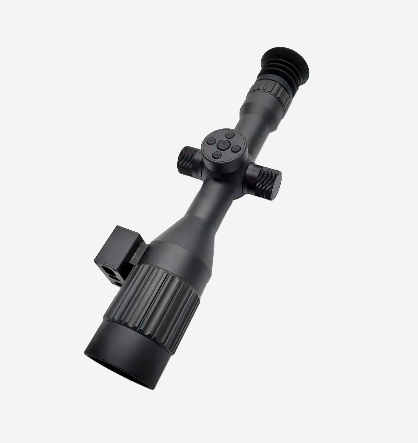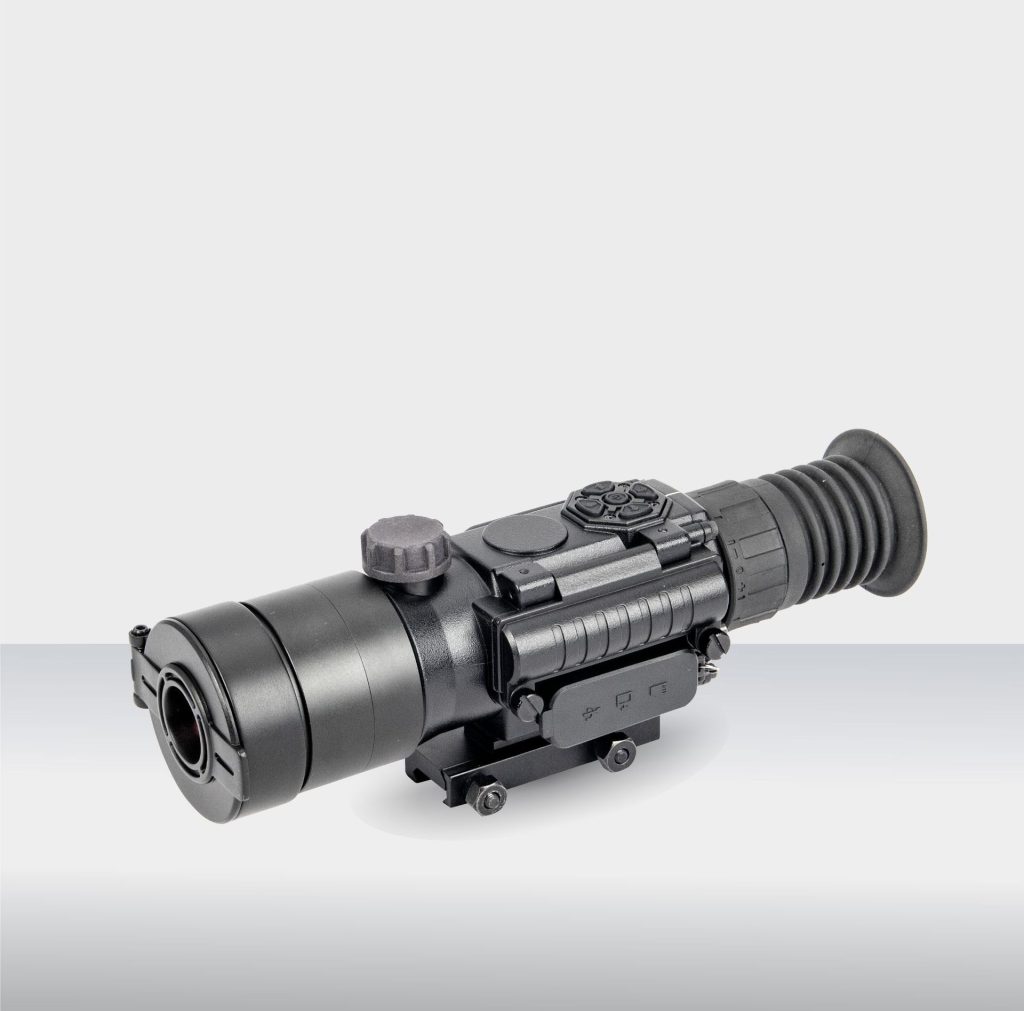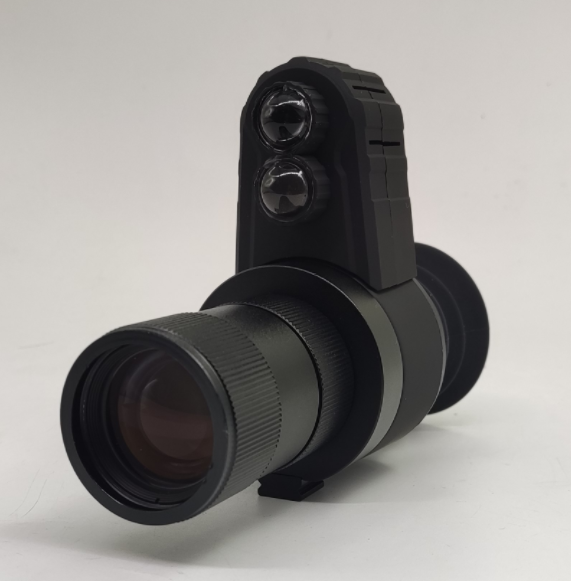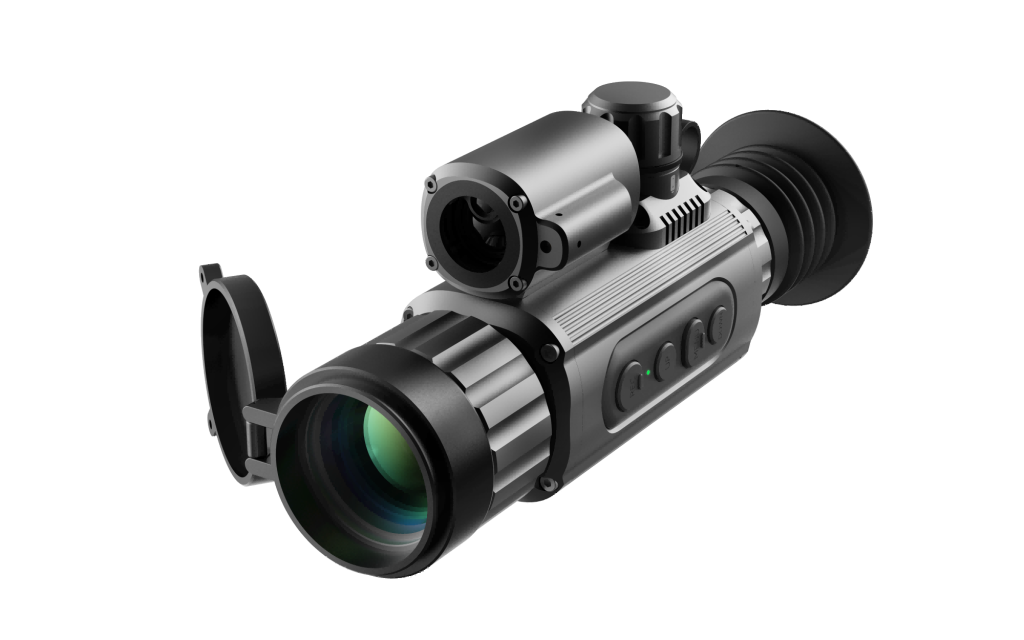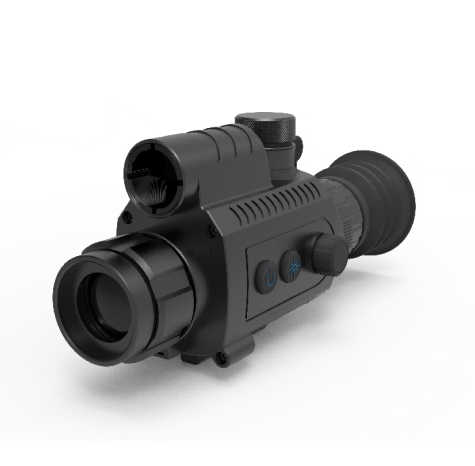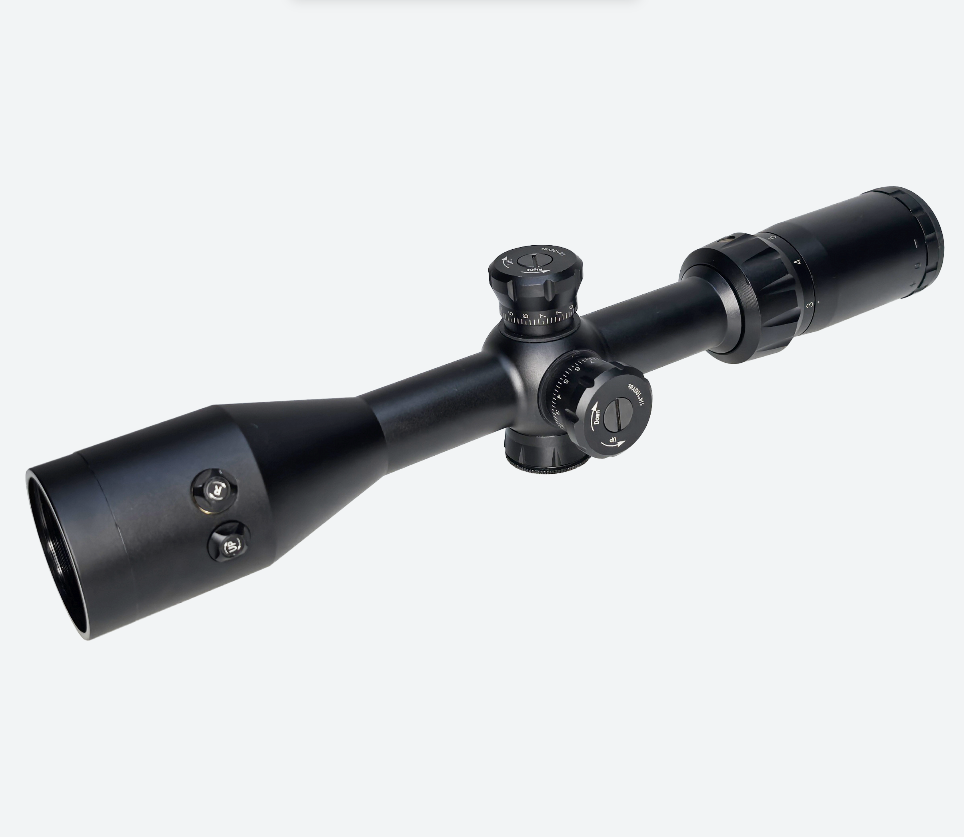Hunting coyotes at night is an exciting experience, but to succeed, you need the right tools – and this starts with your rifle scope first. One of the biggest choices that hunters face is to choose between a thermal imaging sight or a night vision scope. Both have their own advantages, but which scope is more suitable for hunting coyotes? The answer is not that simple. It actually depends on your hunting style, the environment you are in and the aspects you prioritize in your equipment.
Now, let’s take a detailed look so that you can choose the best plan based on your hunting style and environment.
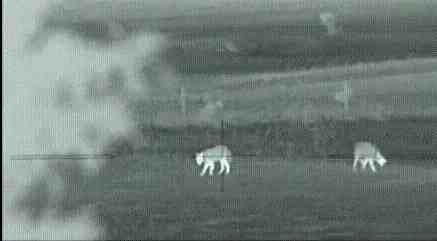
Thermal or Night Vision? Here’s What You Need to Know
First of all, let’s take a look at what these two high-tech optical devices are and how they work.
What Is a Thermal Scope?
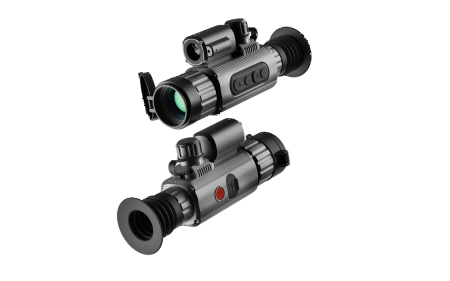
A thermal image scope is a sight that converts the thermal radiation image of a target into a visible light image. All living things emit heat, and thermal imaging scopes precisely utilize this heat to form images. Therefore, even in complete darkness, thick fog or thickets, thermal imaging scopes can “see” warm objects – such as coyotes – which stand out particularly against a colder background.
Usually these images are in black and white or color, showing the differences in heat. The hotter an object is, the brighter it looks and the richer its colors are.
What Is a Night Vision Scope?
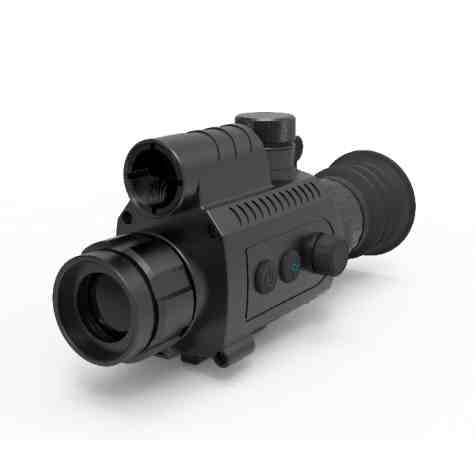
On the other hand, night vision rifle scope require some ambient light to function. It is more like a kind of superpower that can amplify the existing light. It uses special sensors to collect faint light (such as moonlight or starlight), magnifies it thousands of times, and then projects it onto a fluorescent screen, which usually appears green. This makes the dark scene appear brighter, allowing you to see everything around clearly.
Night vision scopes do not display heat, but night vision technology has evolved over several generations. The new generation of technology can provide clearer and brighter images, reducing the “graininess”, allowing you to see the objects you observe more clearly, especially in the presence of light.
What Really Matters When Hunting Coyotes at Night?
When the coyote hunt begins after nightfall, the following key factors of the scope directly affect the efficiency and success rate of this hunt:
- Detection ability: Whether one can detect the target in the first place is the first threshold for night hunting. Thermal imaging devices can quickly locate coyotes by sensing thermal signals, while night vision devices rely on ambient light or infrared supplementary light.
- Target recognition: Merely “seeing” is not enough. It is necessary to clearly determine whether the target is a coyote, rather than a deer, a wild cat, a stray dog or even a domestic animal. Accurate identification is the basic quality of a responsible hunter.
- Effective range: At what distance can the scope still clearly detect and identify the target? This directly affects whether precise long-range shooting can be carried out.
- Image quality: Is the picture clear? Can one clearly see the body structure and movement details of animals? This not only affects identification, but also determines whether one can shoot with confidence.
- Environmental adaptability: Can the scope used work stably in various complex environments such as foggy days, rainy days, shrublands, and open fields?
- Ease of operation: In cold weather or a tense mental environment, are the buttons and adjustment methods of the scope convenient for quick response and adjustment?
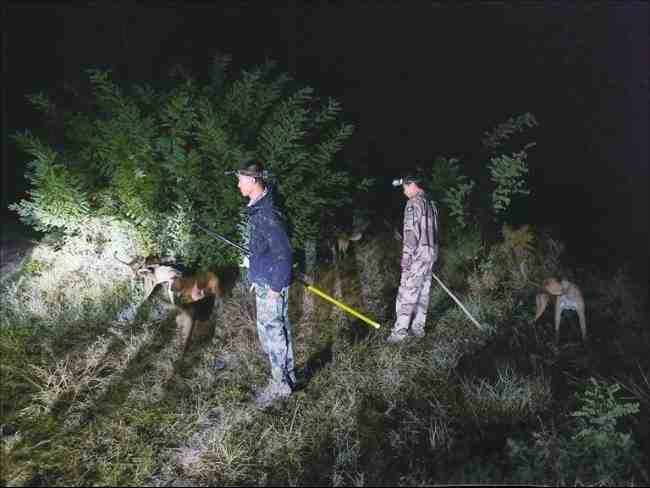
The importance of these factors varies depending on the hunter’s hunting style and the terrain environment in which they are located. For example, in an open field, the detection distance and the target speed might be more important; Among the shrubs in the forest, image clarity and target recognition ability become even more crucial. Only by choosing the most suitable device can one truly gain the upper hand in the night hunting ground.
The Pros and Cons: Night Vision vs. Thermal for Coyotes
Let’s break down the advantages and disadvantages of each technology when it comes to coyote hunting.
Thermal Scopes – Pros & Cons for Coyote Hunting
| Pros | Description |
| Excellent detection in all weather | Works in total darkness, fog, rain, and snow by sensing heat. |
| Sees through cover | Detects coyotes hiding in grass, brush, or behind obstacles. |
| Fast target acquisition | Heat signatures stand out clearly from the background, making spotting easier. |
| No light needed | Doesn’t rely on moonlight or infrared lights — works off thermal contrast. |
| Cons | Description |
| Expensive | High-quality thermal scopes are often costly. |
| Limited image detail | Doesn’t show fur, facial features, or colors — only heat outlines. |
| Takes time to get used to | Requires some practice to interpret thermal images accurately. |
Night Vision Scopes – Pros & Cons for Coyote Hunting
| Pros | Description |
| Better image detail | Allows you to see body features, movement, and surroundings clearly. |
| More affordable | Generally less expensive than thermal optics of similar quality. |
| Natural-looking image | Feels more intuitive — closer to what you see with your own eyes. |
| Good in low-light conditions | Works well with moonlight, starlight, or added IR illumination. |
| Cons | Description |
| Poor performance in total darkness | Requires some ambient light or IR — otherwise, vision is limited. |
| Affected by weather/environment | Rain, fog, and brush can reduce clarity and visibility. |
| IR can reveal your position | Infrared light can sometimes be seen by animals, lowering stealth. |
User Scenarios: Which One Should You Choose?
Next, let’s explore which type of scope is more suitable in some common hunting scenarios.
Scene 1: Hunting in Open Fields or Prairies
Recommendation: Thermal Scope
In a very open space, the main goal of hunters is usually to find coyotes. They may be far away, hiding in slightly low-lying areas, or moving rapidly. In this case, the outstanding detection capability of the thermal imaging sight can play a huge role. It can help hunters quickly scan large areas and capture heat signals. Once discovered, a thermal imaging sight can be used for shooting.
Scene 2: In Forests or Heavily Covered Terrain
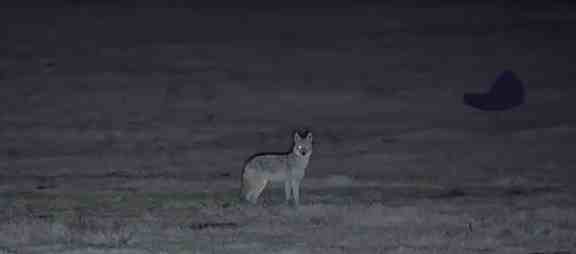
Recommendation: A Combination, or Night Vision with an IR Illuminator
Thermal imaging can help penetrate sparse bushes to a certain extent, but thick leaves can block the view. If you are tracking coyotes at a relatively close distance and need to identify them from trees and bushes, a night vision device equipped with a powerful infrared illuminator will be very effective. Infrared light can penetrate the darkness and help hunters gain a clear view, thus making it easier to identify prey in the woods. However, if coyotes move behind a small open space or thin leaves, thermal imaging is still very suitable for initial detection. Many experienced hunters would use handheld thermal imaging monoculars for scanning and night vision rifle sights for shooting in such situations.
Scene 3: You’re on a Budget
Recommendation: Night Vision Scope (Digital or Gen 1/2)
Generally, night vision technology, especially the older generation or modern digital night vision devices, is more cost-effective than thermal imaging. A powerful night vision sight can be purchased at the price of an entry-level thermal imager. If cost is the main consideration and one is willing to work in ambient light or use an infrared illuminator, then night vision is the best choice for beginners.
Scene 4: Need to Identify the Animal Clearly Before Shooting
Recommendation: Night Vision Scope
This might be the most crucial scene in moral hunting. If there is a possibility of encountering non-target animals (such as livestock, pets or other prey) within the hunting area, it is crucial to confirm the identity. Night vision enables you to understand the physical features of animals more clearly and in greater detail, allowing you to confidently confirm that it is a coyote before pulling the trigger. Thermal imaging simply cannot provide such a level of identification detail.
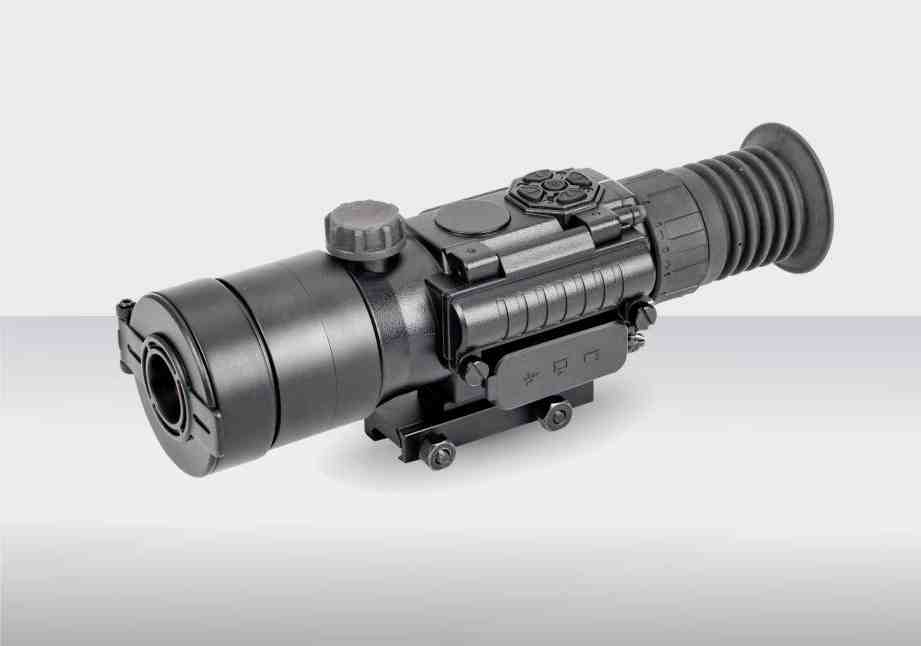
Scene 5: Speed and Target Acquisition Are Your Top Priorities
Recommendation: Thermal Scope
When coyotes move rapidly or you call them and need to catch them quickly, thermal imaging can make the animals glow in the background, which is a huge advantage. There is no need to painstakingly “search” for the target; it will appear naturally. This is crucial in the fast-paced hunting scene.
Final Thoughts: Which Is Better Depends on Your Needs
So which technology edges out the other-thermal or night vision-for hunting coyotes after dark? The short answer is that no single system claims undisputed superiority.
Many dedicated nocturnal hunters blend the two. They first wave a handheld thermal unit across the landscape to locate any warm-moving target, then pivot to a night-vision scope on their rifle to confirm species and take a clean shot. This combined method broadens opportunity while upholding ethical standards. Whatever system you pick, invest time mastering it on the range so instincts take over once the sun dips and the coyotes emerge.

